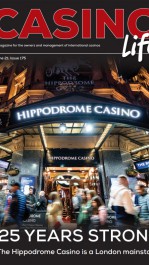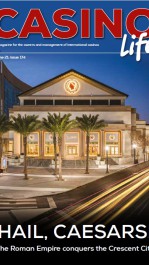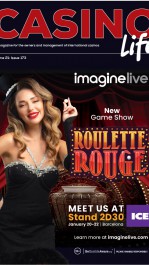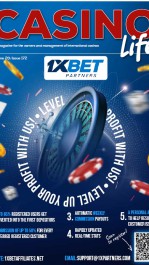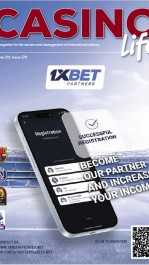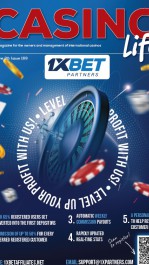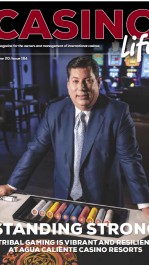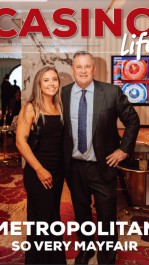Songs, slots, shopping, food and magic in Las Vegas. By Victor H. Royer
That city we know today as Las Vegas, Nevada, was born in 1905 as a dusty whistle-stop for the railroad on the way to Los Angeles. The name “Las Vegas” is a Spanish word meaning “The Meadows,” and it was given to this outpost on the old Mormon Trail because there was water here. A small spring produced an oasis in the middle of the parched desert of the American Southwestern frontier. Today it is called Springs Preserve and it is part of the Las Vegas Water District & Museum, still on the old site. I live about five minutes from there, just around the corner.
At the height of the Great Recession of the 1930s, following the stock market crash of 1929, Las Vegas was a nearly empty, one-horse cowboy town whose only industry was ranching, servicing the railroad as a water stop along the route. Since the country and state were all very much in need of revenue, in 1931 the state of Nevada legalized gambling. And – as the saying goes – the rest is history.
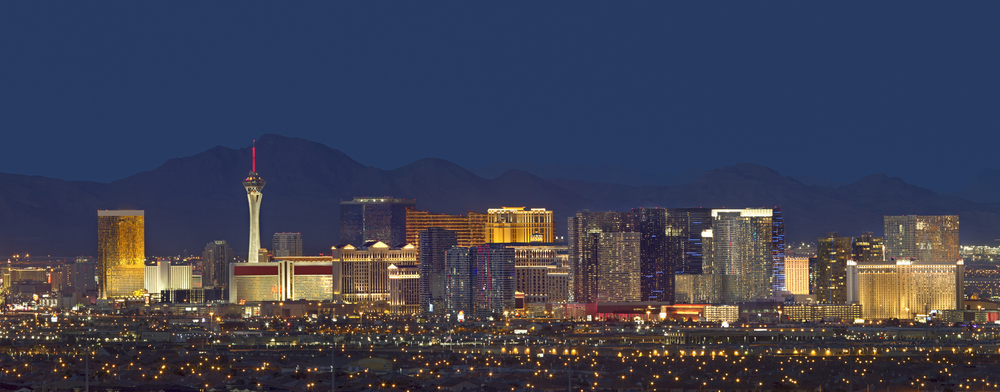
Image Credit: Shutterstock
Downtown did it first
In the 1930s most of the action was in downtown Las Vegas, in saloons which were known as “sawdust joints.” That’s because this was still very much an old-West cowboy town and the sawdust on the floor was necessary to cover the blood which was often spilled, not only in fist fights but often even in gunfights.
But the main motivating factor to create Las Vegas and Nevada as a gambling destination was the construction of the Hoover Dam in Boulder City, about 27 miles from downtown. The dam’s construction brought not only huge amounts of money to the state but also thousands of men with paychecks to cash and money to spend. Now they had the gambling saloons in which to spend it and the red-light district on 16th Street to find other kinds of “action.”
Las Vegas grew rapidly as a result. By the 1940s it was well-patronized by visitors from Los Angeles, who took trips to the gambling saloons on the trains which then ran frequently between L.A. and Las Vegas. Soon it became clear that these visitors were attracted by headline entertainers, and the saloons soon began booking cowboy acts and Western stars from the movies.
By the end of World War II, great national prosperity flooded the United States and the Western expansion was on. So was the expansion of Las Vegas into the Gambling Capital of the World, as it was then billed worldwide. Then in 1948, famed gangster Benjamin “Bugsy” Siegel elbowed his way into a brand-new kind of gambling resort on what was then the old Los Angeles highway. Today we know this portion of it as the famed Las Vegas Strip.
But back in 1948 this was about six miles or so away from the “real action” in downtown Las Vegas. Almost everyone thought Bugsy was nuts. By the way, he hated the nickname “Bugsy” so much that he would shoot dead anyone who called him that to his face. He eventually built the Flamingo, which still stands on the same spot on the Las Vegas Strip today. But the last of the original buildings were destroyed about 15 years ago, to make way for a Flamingo wildlife exhibit, for a time.
This new casino was called a “carpet ioint,” because it was a fancy place with no sawdust on the floor – just carpets. Furthermore, it had a dedicated casino, and its main attractions were famous Hollywood entertainers, and nightclub performers. The original concept failed but the property was reopened in 1949 and the rest is – again – history.
From then on, Las Vegas became known not only as the Gambling Capital of the World, but also as the Entertainment Capital of the World. America’s greatest entertainers played the Flamingo, and later at the many other casino resorts which sprang up over time. In just a few years, even the downtown Las Vegas sawdust joints changed, and became instead clubs and gambling resorts. These were similar to the new ones on the Strip but with a smaller, more intimate identity.
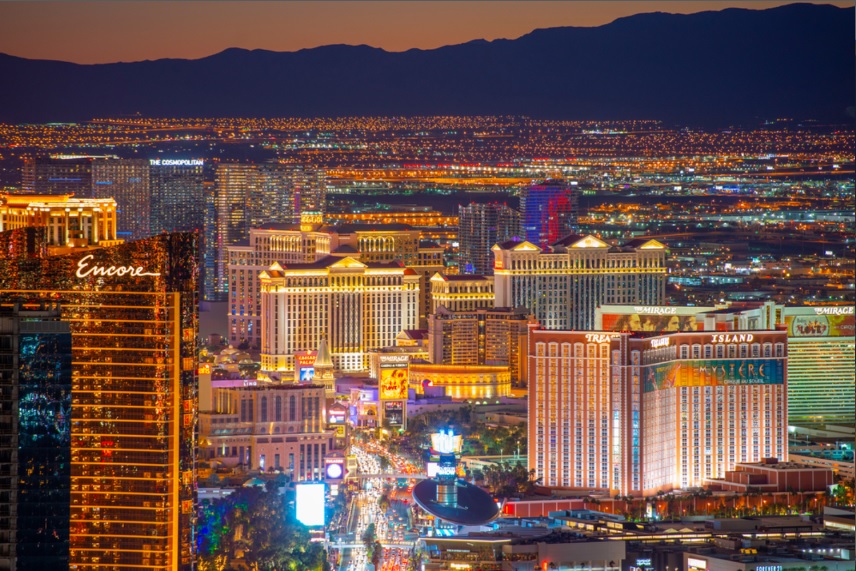
Image Credit: Shutterstock
The Pelvis shakes things up
From the 1950s on, Las Vegas casinos hosted the greatest entertainment acts in history. The most famous among them are – probably – the great “Rat Pack” group, which consisted of Frank Sinatra, Sammy Davis Jr., Dean Martin, Peter Lawford and Joey Bishop. Among the few female members were, most often, Angie Dickinson and Shirley MacLaine.
But there were many other headliner acts in Las Vegas from the 1950s into the 1990s. Among them were dancers Gene Kelly and Donald O’Connor, and singer/dancer Debbie Reynolds, as well as “Mr. Las Vegas” Wayne Newton, and probably the greatest showman of all time, Liberace. Many comedians, like Shecky Greene, Buddy Hackett, Milton Berle, Don Rickles, Johnny Carson and Henny Youngman played Vegas.
But the biggest act in Las Vegas history has to be Elvis Presley. He actually made his Vegas debut in the 1960s at the New Frontier and bombed. At the time the audience in those properties were older people who were expecting swing bands. Instead they got Elvis the Pelvis. Not a good fit. Presley actually said at the time that he “never wants to play this dump again!”
But after his famous 1968 TV sensation, “The Comeback Special,” Elvis headed back to Las Vegas. He began a multi-year residency at the newest and biggest casino, The International. It later became the Las Vegas Hilton and today it is known as the Westgate.
By the late 1980s and into the 1990s Las Vegas began to see a decline in headline acts, as the older generation of singers and comics, and great nightclubs acts of the earlier era passed on or retired. A new age of magicians and animal acts took the city by storm. These included massively popular acts like Siegfried & Roy and their white tigers.
By the 2000s Las Vegas also began to see the decline of the showgirl shows, such as the famous “Lido de Paris” at the Stardust and” Jubilee” at Bally’s. Today it is known as the Horseshoe. Today these shows are again being replaced by name acts and nightclubs, as well as name-brand magicians, like David Copperfield, whose show has been a hit on the Strip for many years.
It was no mirage
As the era of the original Las Vegas casino resorts came to an end in the 1990s, the era of the megaresort began. Initiated with the opening of The Mirage in 1989, the concept of the all-integrated casino megaresort took off and, by the mid 1990s, most of the older properties were imploded and replaced by these multi-billion-dollar behemoths.
Prior to the era of the megaresorts, Las Vegas was famous for gambling and name-act headliner entertainment. It was all basically casino-centric, with the entirety of the “resort experience” being centered in and around the casino. Personally, that’s the way I still like it – but I am one of those people from that original era of Las Vegas and am just a bit biased. But in a friendly kind of way. But that wasn’t all that there was.
All of the great Las Vegas casinos of yesteryear also had great food and shopping. Las Vegas also evolved into a shopping experience with the introduction of the Fashion Show Mall right on the Las Vegas Strip itself. It’s still there and still one of the greatest retail destinations in the city.
The food was still good and there was always plenty of it. Benny Binion, one of the famous founding fathers of Las Vegas – and owner of the equally famous Binion’s Horseshoe in downtown Las Vegas – pioneered the $2 steak dinner with all the fixings, soup or salad, a glass of beer and dessert.
What many people may perhaps also not know is that the iconic Las Vegas buffet, now largely gone, can trace its beginnings to the Chuck-Wagon Buffet at the old El Rancho, which stood on the southwest corner of the Strip and Sahara Avenue. It was a fully cowboy-themed property and one of the very first themed Las Vegas resort destinations. It burned down completely in 1960 and was never rebuilt. The land it stood on remains empty to this day, and serves occasionally as the outdoor venue for concerts and gatherings.
But it was the origination of a “theme” and “integration” as a “casino resort” which the old El Rancho Vegas pioneered – along with the now-famous Las Vegas buffet. And this concept was reignited in the 1990s with the emergence of the integrated mega resorts, all of which not only had buffets, but fine dining, often from celebrity chefs like Wolfgang Puck and Gordon Ramsay.
While this trend has somewhat run its course by today, the concept of an all-inclusive destination experience still prevails. Centers like the Forum Shops at Caesars Palace still cater to and showcase the importance of retail, as well as of dining. And this is not limited to just “fine” dining.
Almost all of these resorts also offer 24/7 dining, as well as casual dining and very often at truly great prices. In many instances it is actually less expensive to go for a great meal at one of these resorts than to buy all the ingredients at the store and then cook it all yourself. But of course the formula behind this is still the same: Once in the door for the “special,” many people also buy other things, be it in the shopping center within the resort itself or by playing the latest Slots bonuses in the casino.
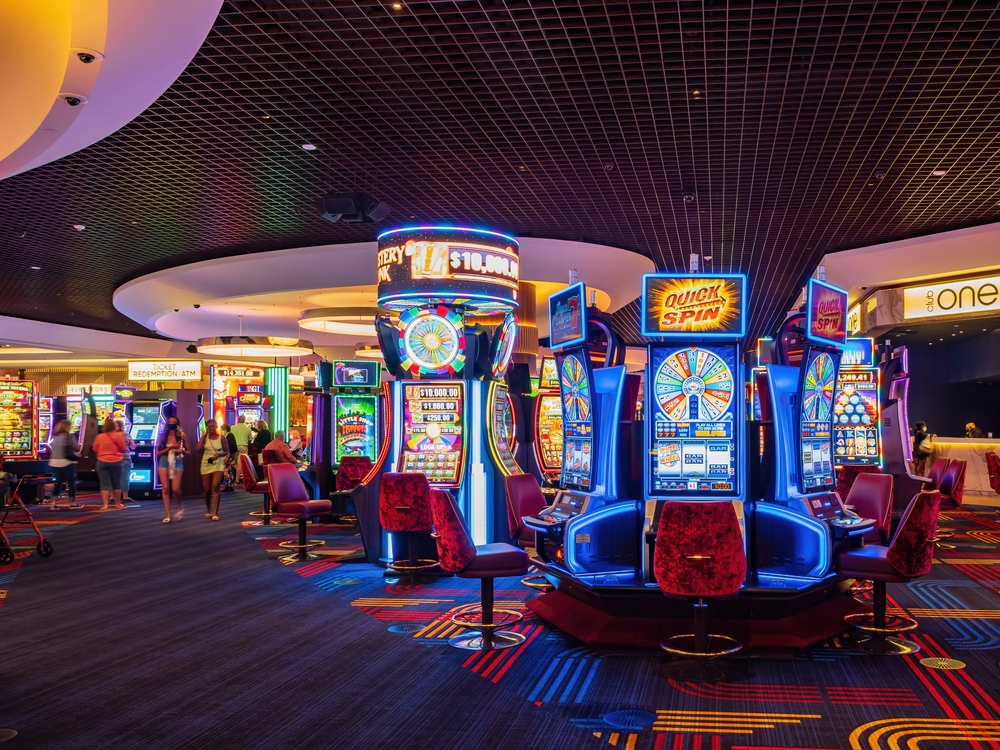
Image Credit: Shutterstock
Where we are now
So the evolution of Las Vegas has now come to also mean that this city has become The Retail & Entertainment Capital of the World, as well as all the other titles mentioned here. An all-in-one destination experience unlike any other is what Las Vegas has always been, ever since its beginnings. You can celebrate Las Vegas glittering past at the Neon Museum which is a remarkable tribute to the city's vibrant history and a must see attraction.
Throughout its history, Las Vegas entertainment and gambling have walked hand-in-hand, and this hasn’t changed to this day. Even though today’s Las Vegas is mostly known as a “resort destination” and as a “convention destination,” it has even more recently also become known as “The Sports Betting Operator Capital of the World.” Even more recently, some are calling it the “Sports Capital of the World,” along with all the other attractions which this great city in the desert still has.
I’ve been here 41 years now – and it’s been a blast.


